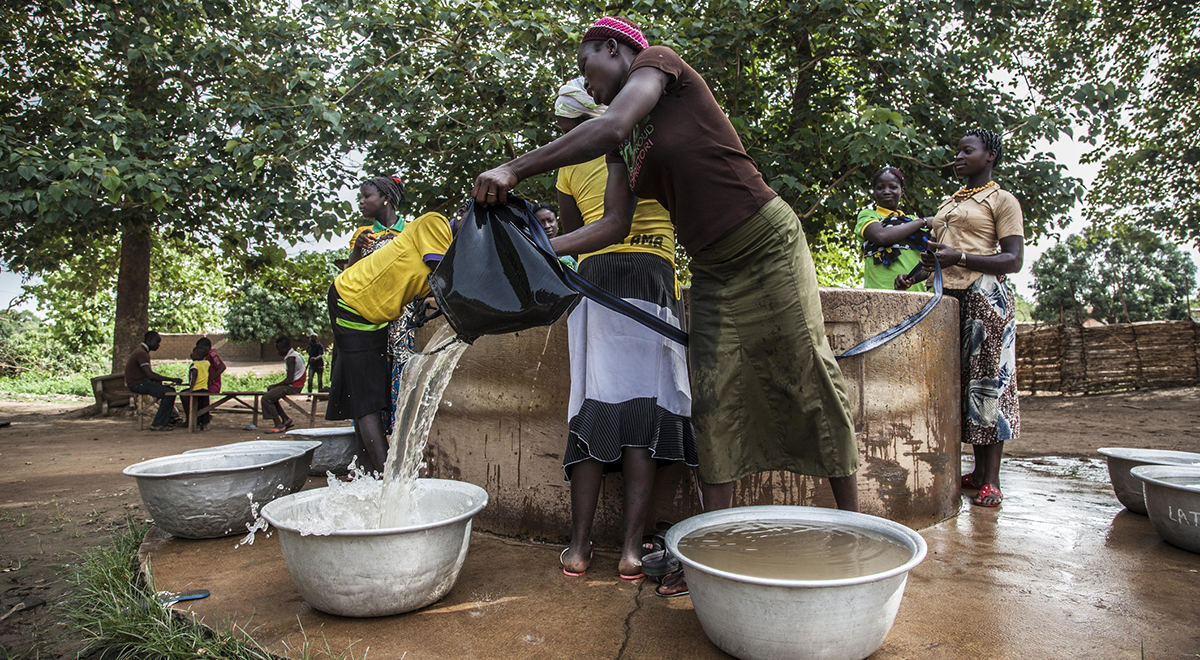New Water Insecurity Scale Provides Critical Data
Texas A&M Geography’s Jepson co-authored new research quantifying experiences of household water insecurity in an equivalent way across low- and middle-income countries.
Oct 4, 2019

The World Economic Forum lists water crises among the top 10 most likely and impactful global risks. Most water metrics to date have only focused on water quality or water availability at national and regional scales. There has been a critical gap, though, in the ability to identify which households experience issues with reliably accessing safe water in sufficient quantities for all household uses, from drinking and cooking to bathing and cleaning — until now.
Dr. Wendy Jepson, University Professor in the Department of Geography in the College of Geosciences at Texas A&M University, is part of a multi-disciplinary, international team of more than 40 researchers that has developed and published a new tool that can fill this data gap and provide actionable, policy-relevant information to address the global water crisis.
The 12-item Household Water Insecurity Experiences Scale (HWISE) quantifies experiences of household water insecurity in an equivalent way across low- and middle-income countries. Based on data from more than 8,000 households in 23 countries, the HWISE Scale measures the multiple components of water insecurity (adequacy, reliability, accessibility, and safety) across disparate cultural and ecological settings. In addition, it only takes 3 to 5 minutes to ask the 12 simply phrased items.
The questions prompt respondents to reply “never, rarely, sometimes, often or always” to experiences with water insecurity in the last four weeks, including:
- How frequently did you or anyone in your household worry you would not have enough water for all of your household needs?
- How frequently did you change what was being eaten because there were problems with water?
- In the last 4 weeks, how frequently has your main water source been interrupted or limited (eg, water pressure, less water than expected, river dried up)?
With these responses, a water insecurity score can be generated for each household. These data can then be used to better understand the prevalence of water insecurity, its causes and consequences, and to inform policy development.
“Our ability to quantify experiences with food insecurity have been transformative of our understanding of the prevalence and consequences of worry about food,” said Dr. Sera Young, lead author of the study and associate professor of anthropology and global health in the Weinberg College of Arts and Sciences at Northwestern University. “We expect this metric to be similarly transformative for water.”
"Our efforts with the HWISE Scale, which we see as a major contribution to support UN Sustainable Development Goal 6 (Clean, safe water for all) assessments, demonstrate the capacity of global, long-term collaboration and cooperation to achieve significant advances in social science that can translate to real-world problems,” Jepson said. “But the HWISE Scale is only the tip of the iceberg — our NSF-funded Household Water Insecurity Experiences Research Coordination Network (HWISE RCN) is advancing social science research frontiers in many areas.”
The HWISE RCN’s work provides a broad, comparative context for understanding the role of uncertainty in water insecurity, Jepson said, as it is both a driver and consequence of water insecurity.
“We also examine how water insecurity drives food insecurity; household water insecurity in higher-income countries like the U.S., Canada, and Europe; and the complex ways climate change determines multiple forms of water insecurity, and how that influences human mobility and migration dynamics,” she said
The researchers have found that higher HWISE Scale scores (i.e., greater water insecurity) are strongly associated with greater food insecurity and stress, lower economic productivity, physical injury, altered infant feeding practices, and adverse health impacts.
“Given the power of the HWISE Scale to benchmark global household water insecurity, as well as inform national and regional policy, we are partnering with UNESCO and Gallup to raise resources for the inclusion of the tool in the Gallup World Poll,” said Young. “We also seek to implement the scale in nationally representative surveys. Further, numerous NGOs are currently using the tool to monitor and evaluate ongoing projects and plan to share their findings soon.”
Read the full journal article in in BMJ Global Health: The Household Water Insecurity Experiences (HWISE) Scale: Development and Validation of a Household Water Insecurity Measure for Low-income and Middle-income Countries.
Published in cooperation with Northwestern University.
